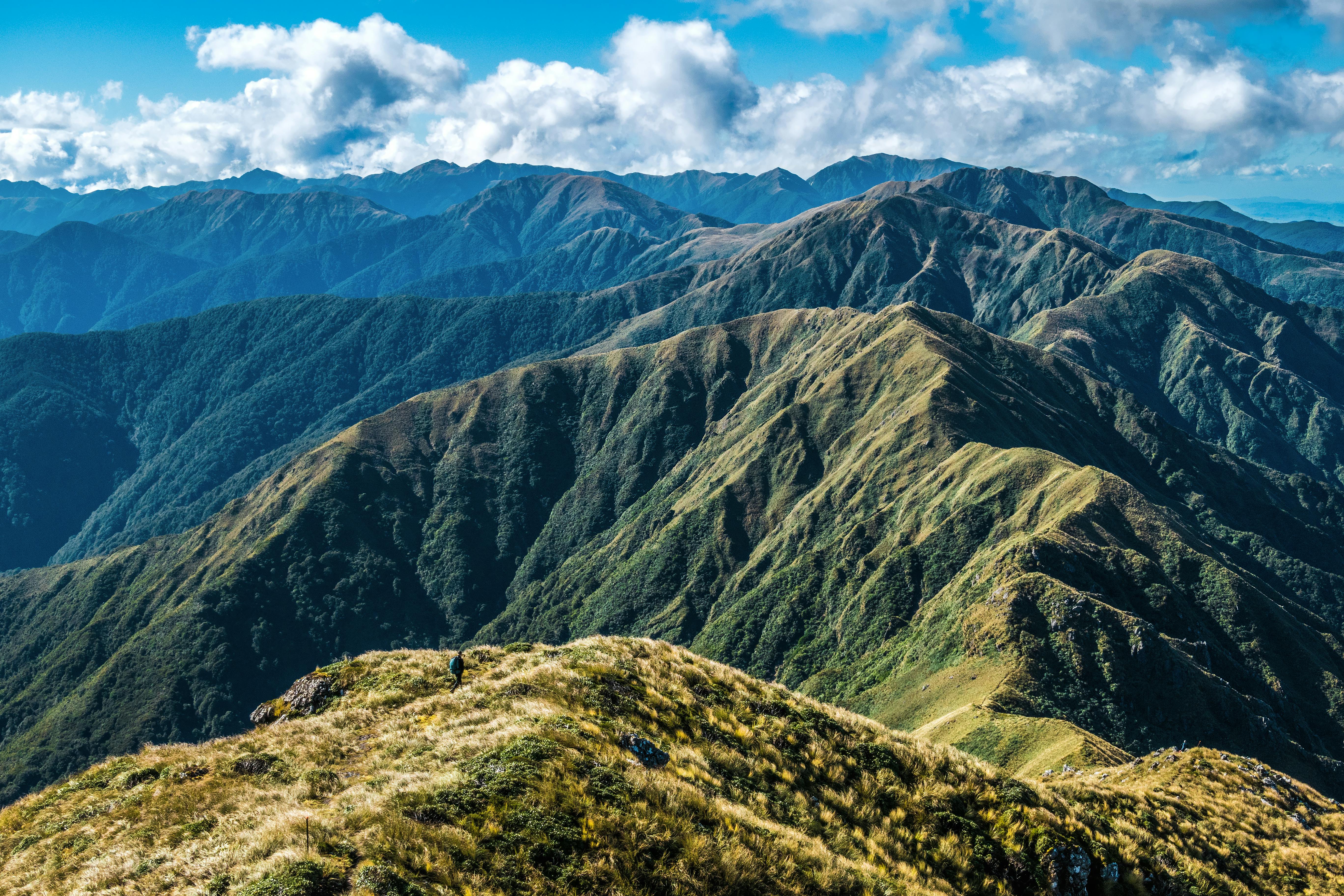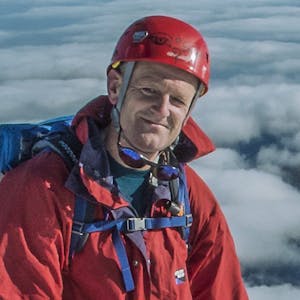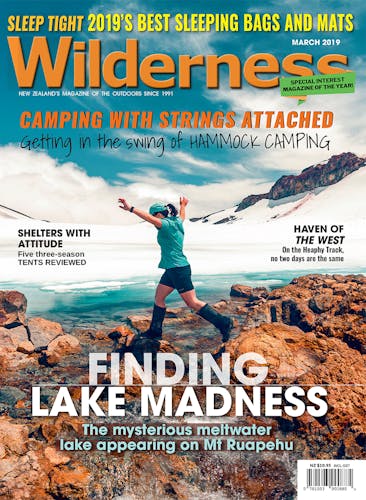Peter Laurenson walks the Tararua Peaks circuit, probably the only the walk anywhere to feature a 70-rung steel ladder to negotiate the crux
To mark Wilderness magazine’s 30th anniversary, current and past editors and contributors scoured the archives for the 30 best trips we’ve published over the decades. This story, original published in March 2019, was included. You can find all 30 of the greatest Wilderness trips in the October 2021 issue.
It must’ve been the deadening effect of the cloud: everything closes in, becomes flatter, subdued. When I’d come this way five years before, most of my two-day dash taking in the spectacular main Tararua Range was in clag. The terrain actually seemed less intimidating – not as steep, as exposed or as big. Now, back at this ladder in the wilderness with my two teenage sons Ed and Will, in perfect conditions, I felt rather more impressed.
By the time I reached the top of the ladder in the exposed and craggy notch between Tuiti and Tunui, the 1325m twins known as the Tararua Peaks, Ed and Will were already lounging nonchalantly at the bottom. Great; I wanted to get some shots with someone on the steel structure. “Ed, climb up a bit so I can shoot you.” To do that, I had to gingerly step onto steep tussock beside the ladder, then hook an arm around the top rung before going to that somewhat more precarious through-the-lens space.
There are plenty of striking places in the Tararuas, but the ladder at the steepest section of the Tararua Peaks, just west of Maungahuka Hut, stands out to me. I’d seen photos of it – even a guy carrying his dog up it in his backpack.
The circuit from Otaki Forks, up past Field Hut to Bridge Peak, then along the main range past Maungahuka Hut, Anderson Memorial Hut and over Junction Knob, then plunging down to the Otaki River and Waitewaewae Hut before returning to Otaki Forks is, by any measure, physical.
According to my flash new Garmin watch, it’s 54.73km and, more tellingly, with 4013m of ascent and descent. Having done it in two very long days and now, five years later, in three slightly more leisurely days, the latter is definitely recommended. Aside from avoiding exhaustion, more time permits space to soak up the fabulous scenery.
It was nearing the end of the first week of the school holidays and not much was happening. “Okay guys, it‘s looking good for two days of fine weather. Time to put your screens down and gather your gear,” I told the boys. A few grunts confirmed that they understood. At 17 and 15, they’re starting to build some real hill condition and as we completed packing, I enjoyed the realisation that I no longer had to carry any of their gear – 14kg or so a piece.
I wanted to be on the trail first thing so we could hopefully enjoy clear weather between Bridge Peak and Maungahuka Hut. In the car park, just before 8am, I chatted briefly to a guy who was looking after a group of kids on a geological trip. He mentioned that a party of trampers had taken more than 10 hours to get out from Waitewaewae Hut the day before, due to a slip somewhere along the route. Last time I came that way it had taken four hours. I hoped we weren’t going to endure a sting in the tail this time.
The trail from Otaki Forks to Bridge Peak (1421m) is almost all up, but is also in very good condition, allowing quick progress. As we climbed out of the bush on to Table Top, I was heartened to see that the heavy cloud draped over the main range to our left had started to break up. By 12.30pm we’d finished lunch at Bridge Peak and set off eastwards towards Boyd Wilson Knob (1138m), the first of four named high points that steadily climb again to the Tararua Peaks.
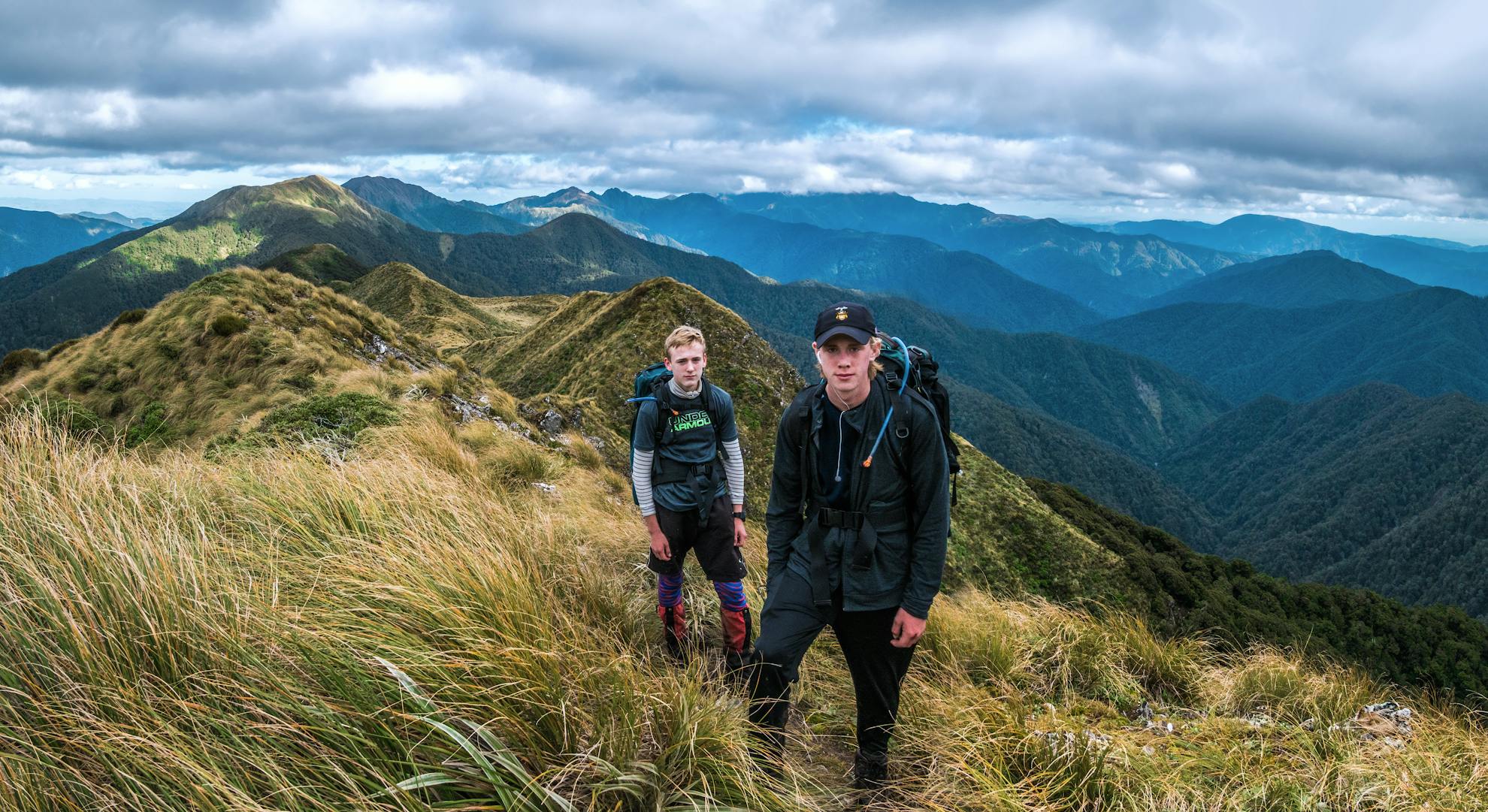
On cue, the cloud had cleared and I revelled in the lovely photographic conditions – the polar opposite to what I’d encountered five years earlier. By this stage, Ed and Will were effectively demonstrating how much I seem to have aged in the past few years, leaving me to spit out dirt and tussock as they loped their way up and down the craggy ridge.
Boyd-Wilson, Vosseler (1198m), Yeates (1205m) and McIntosh (1286m) were all quickly negotiated. The engaging terrain often required hands as well as feet. In the bright conditions it was really enjoyable. The next steep section was unveiled as we drew nearer to the Tararua Peaks. To the west, Kapiti Island came into clear view, as did the Wairarapa to the east.
“So just how big is this ladder, Dad?” Its reputation was having its usual effect on the boys. ‘Keen with a touch of apprehension’ summed up their demeanour as we reached the top of the trail, just beneath Tuiti’s summit. While we tended to an emerging blister on Will’s foot, we soaked up the heady ambience. Ahead was a very steep, two-hands required, partially cable-protected descent to a small notch. Beyond that was the void.
It was in the 1930s that intrepid trampers first pushed a route through the Tararua Peaks. Using climbing ropes for protection, they took several attempts to crack it. Later, the Tararua Tramping Club installed a wire cable, which I imagine would have been a fairly focusing ascent or descent tool, especially in wet conditions. The cable was later upgraded by the Forest Service to a chain ladder. Pictures reveal a wobbly affair that, at least, would be preferable to a single cable. DOC fixed the current ladder in the early 2000s. About 25m high, with over 70 rungs, it’s an impressive and very effective way to get up or down the crux section.
I joined Ed and Will beneath the ladder. “So the hut’s not far now, eh?” asked Ed.
“Must be close,” was all I replied. I went ahead to photograph them coming towards me around the dramatic, chain-protected section skirting underneath the summit of Tunui.
We all climbed the ladder without incident and, back on the ridge, I copped some flak from the teenagers when they discovered how far away Maungahuka still was. My clouded memory of my first visit clearly needed some updating.
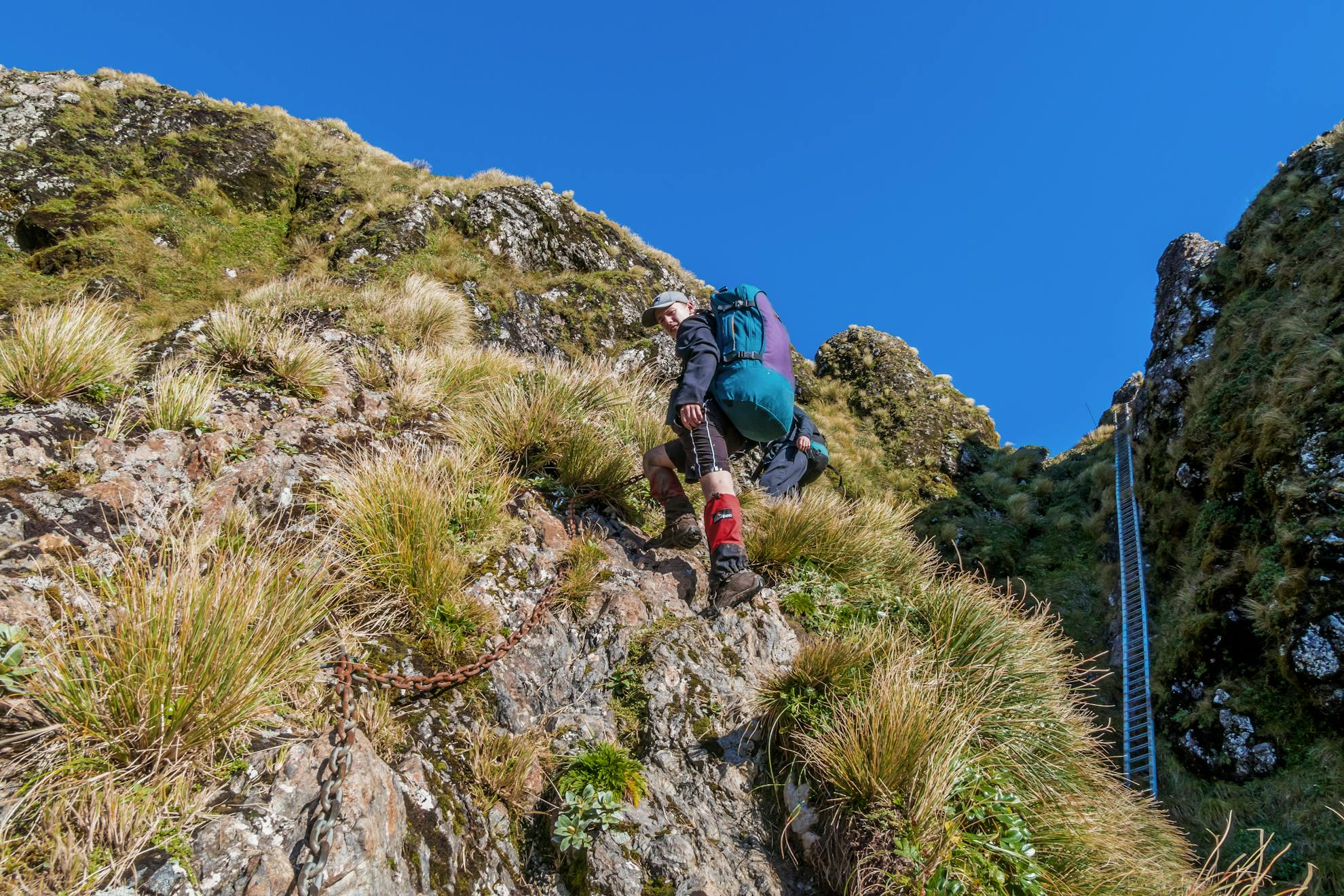
The clear weather slowly gave way to swirling cloud as we dropped down to Maungahuka Hut at dusk. I lingered, enjoying some beautiful cloud-at-sunset light. And life got even better after entering the hut. Four room temperature-chilled bottles of Kiwi Larger sat gleaming appetizingly at me from the bench. The hut book revealed that two hunters had left them behind for all comers.
Twelve-bunk Maungahuka Hut, nestled into the tussock hillside beside a pretty tarn, deserves its reputation for being one of the Tararua’s most spectacular spots. This became more apparent when I looked back from the ridge north of Anderson Memorial Hut the next afternoon to see the main range unfold in clearing cloud. Right in the middle, at what appeared to be near the highest point, sat a tiny red dot commanding unimpeded views.
After enjoying a comfortable night, we set off along the main range in the direction of four more high points, the first being 1138m Simpson.
The weather began to close in, but we still enjoyed dramatic clearings, interspersed with swirling moody cloud throughout the day. I was surprised to encounter some more exposed and steep terrain between Simpson and Aokaparangi (1354m). Again my clouded memory got a refresh.
Beyond Aokaparangi was Kahiwiroa (1320m) and, a little further north, we encountered my bivy spot of five years before. Today, easily-seen poles mark the trail off a broad, multi-spurred section back into the bush, but on my first visit, in dense cloud, no poles existed. The many spurs all seemed viable descent options so, rather than risk taking the wrong one, I bivvied here for the night. I should have got my compass out, which is what I did next morning in the persisting cloud, soon locating the first reassuring cairn leading down to the bush.
This time we had no need for a compass and, immediately after breaching the bushline, were confronted with an unexpected and dramatic contrast – some of the finest goblin forest I’ve ever seen. As I neared Anderson Memorial Hut, I came across a variety of other forest treats – all manner of fungi, which provided me an opportunity to try out the macro mode on a new hill-friendly compact camera I was taking on its maiden voyage.
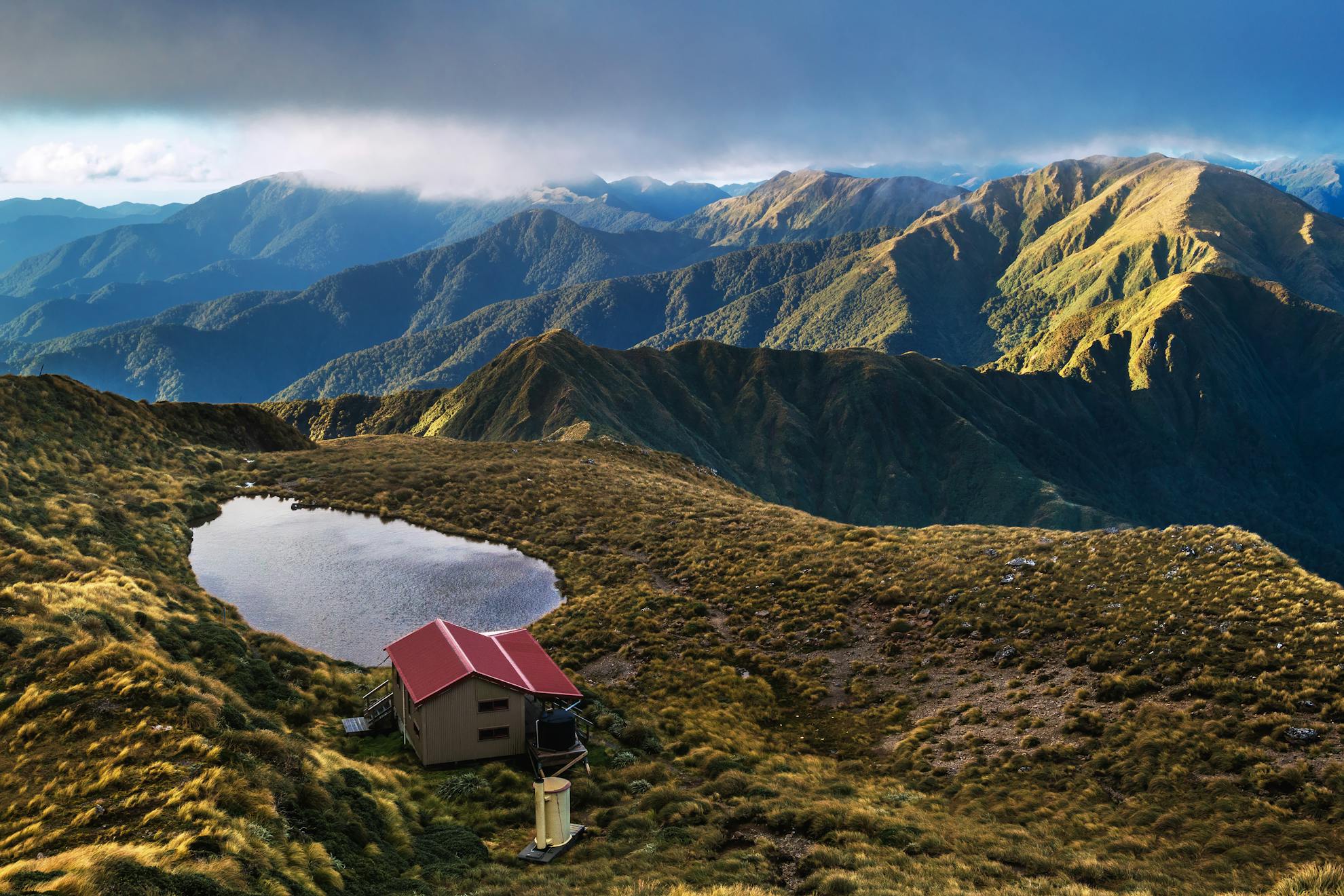
“Ah, dad!” At Anderson Memorial Hut I copped further flak. My estimate of about seven hours to reach Waitewaewae Hut was proving to be optimistic. At one point, I’d even floated the idea of dropping packs at Junction Knob for a quick scoot up Mt Crawford. Lunch at Anderson Mem-orial had to be rushed to improve our chances of reaching Waitewaewae before nightfall.
The terrain over Junction Knob and down off the main ridge via Shoulder Knob is considerably easier than that which we’d already travelled, but the relentless 1000m descent through forest, over slippery roots and mud, to the Otaki River had my knees complaining. We trudged into the hut just as it was getting dark and drizzle was setting in. No cold Kiwi Larger this time.
We awoke to the pattering of rain on the roof as I pondered what lay ahead – that slip I’d been told about. A small notice on the wall of the hut indicated that a new, higher route had been cut at some point. Nothing else. Off we trudged into the rain. It was wet but not cold. On Plateau, I knew to expect a junction point soon. Sure enough, a sign recommended the left option. The sign pointing to the right – old – route simply said ‘Good luck!’
I had expected something pretty rough, but the new trail was clearly marked and traversed around a contour line much of the time. We reached Otaki Forks after five hours, puzzled about how the other party had taken twice as long. I guess their luck had run out. Ours certainly hadn’t.
We’d enjoyed three superb days in some of the best the Tararuas has to offer.
“So how was it Will?”
“Yeah, alright.”
- Distance
- 43.1km
- Total Ascent
- 3941m
- Grade
- Moderate / Difficult
- Time
- Otaki Forks to Maungahuka Hut, 8hr; To Anderson Memorial Hut, 4.5hr, To Waitewaewae Hut, 4.5hr; To Otaki Forks, 5hr
- Accom.
- Maungahuka Hut ($5,10 bunks), Anderson Memorial Hut ($5, six bunks), Waitewaewae Hut ($5,16 bunks)
- Access
- From Otaki Forks lower car park, off Otaki Gorge Road
- Map
- BP33
GPX File
- Tararua Peaks circuit (gpx, 25 KB)
GPX File
- Your device does not support GPX files. Please try a different device.





